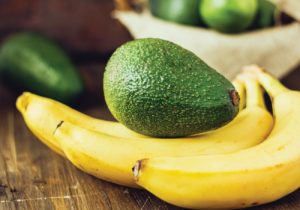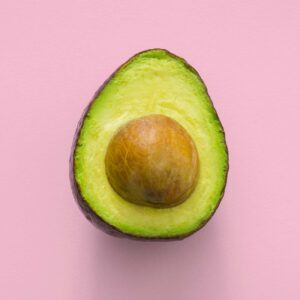
Changes in baby poo when starting solid foods
Baby poo chat is undoubtedly a norm for new parents, but when it comes to weaning, what poo changes should you expect? Introducing solid foods into your baby’s diet is a significant milestone, accompanied by a host of adjustments, including noticeable changes to their bowel movements. Understanding these changes can provide valuable insights into your baby’s digestive health and ensure a smooth transition during this developmental phase. So, let’s delve into the fascinating world of baby poo and uncover what to anticipate when starting solids.
This blog will cover
- What poo changes should you expect when starting solids?
- Everyday worries about poo changes during weaning
- How to manage concerns such as constipation during weaning
What will happen to your baby’s poo when starting solids?
When transitioning your baby to solid foods, you may notice significant changes in stool colour, texture, and frequency. This is understandable, as your baby’s digestive system is transitioning from the digestion of milk only (breast and/or formula) to a wide variety of foods. Here are some of the most common changes to see.
- Colour – During weaning, your baby’s stool colour may shift from a yellowish or light brown hue to a deeper brown as it adapts to a whole host of new foods. You may also see their poo change colour depending on what they have been eating – lots of green foods like spinach may mean greener stools or tomato-based foods can cause stools to become oranger, for example.
- Texture – For many babies, stools will become firmer in consistency; however, initially, it is not uncommon to see fluctuations between looser and firmer textures.
- Frequency – It’s typical for babies to experience decreased bowel movements as they become accustomed to solid foods, reflecting their developing digestive system’s adjustment to processing a broader array of food and nutrients.
Overall your baby’s poo changes mark a pivotal period for your baby’s gut microbiome, with a notable transformation occurring as the digestive tract adapts to the introduction of diverse food sources.

Poo changes during – when to worry?
It’s common for babies to experience changes in the colour, texture, and frequency of their bowel movements when starting weaning. However, parents often wonder about other poo differences that may arise. Here are some additional poo changes you might notice and when to seek extra support.
- Undigested food in stools – this is a common occurrence in baby poo once your start weaning. Often you will find foods such as skins, sweetcorn and peas that reach your baby’s poo undigested. In part, this is due to the lack of chewing skills and teeth at this stage to help babies grind down these foods, alongside the fact many foods that reach nappies more intact contain a fair amount of insoluble fibre (and babies can often have a much quicker intestinal transit time, e.g. food moves more quickly through their gut).
- Mucus in poo – some babies and children will experience mucus in their stools, which can look stringy and slimy. Mucus is present in the gut, and for good reason – it can support the gut barrier and aid in the protection against harmful bacteria. However, seeing mucus in your baby’s stool can understandably raise concerns. While small amounts of mucus can be expected, especially during teething or when introducing new foods, excessive mucus or persistent presence might indicate an underlying issue such as an infection or food allergy. If you notice a significant amount of mucus in your baby’s stool or if it persists, it’s advisable to consult with your GP.
- Smell changes – unfortunately, a change that cannot be avoided when poo starts to change in weaning is the smell. It’s likely your baby’s poo will have a more pungent and more distinct smell! While it may not be the most pleasant change, it’s a natural part of the weaning process.
- Blood in poo – blood in stools is always a red flag and should be discussed as soon as possible with a doctor. Causes can vary, but it’s essential to explore these with a medical professional as soon as you can.

Help, my baby has started solids and is constipated.
Constipation can be a common challenge during weaning, and whilst often shortlived as babies ’ guts adapt, it can still be distressing. Several factors can be linked with constipation during weaning, including;
- Dietary Factors: Different foods affect your baby’s stools differently. Fibre in fruits, vegetables, whole grains, nuts, and seeds can help soften stools. However, too much fibre too quickly can lead to constipation. Also, a diet too high in fibre may fill up your baby quickly, displacing other essential nutrients.
- Fluid Intake: Poor fluid intake can lead to dry, hard-to-pass stools. Babies should still get enough fluids from breastmilk or formula, but once your baby starts solids, offer water alongside mealtimes.
- Cow’s Milk Protein Allergy: In rare cases, constipation can be a symptom of a cow’s milk protein allergy. If your baby shows other symptoms like eczema, reflux, or poor growth, consult your GP or a Pediatric Dietitian.
To manage short periods of constipation, consider the following strategies
- Add fibre-rich foods gradually into your baby’s diet and alongside fluids.
- Include fruits high in sorbitol, like prunes, pears, plums, and peaches.
- Kiwi is a great fruit to try for constipation!
- Be cautious with high-fibre foods like chia or flaxseeds; start with small amounts and ensure alongside fluids or soaked in fluids initially.
- Ensure adequate fluid intake from water and milk feeds.
If constipation persists or causes discomfort, consult your GP. Some babies may need laxatives under medical guidance.
